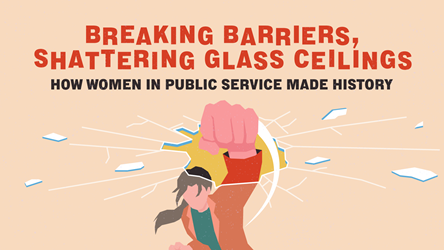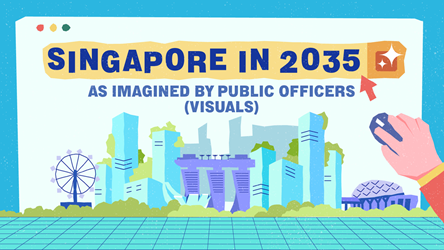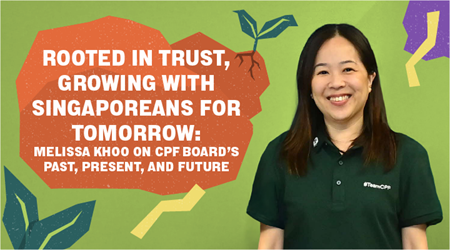How To Have Meaningful Conversations About Thorny Topics

In conversation with:
- Nick Pang, creator of conversation card game Smol Tok
- Basil Kannangara, inter-religious dialogue facilitator with Being Bridges
- Debra Lam, facilitator on issues of disability, Our Common Ground
Nick, Basil and Debra, who all have experience in various conversation spaces, came up with the idea of a card deck called Diversity by Default.
Conceived in 2019 at the International Conference on Cohesive Societies, the card deck is an expansion pack for the conversation cards Smol Tok, and is currently in playtesting stages, conducted both online and in-person.
A Physical Aid To Guide Conversations
The card game is designed to facilitate conversations on various topics, including race and religion, nationality and culture, and disability and mental health.
In more formal facilitated dialogues, organisers and facilitators spend much time thinking of the structure and format of conversations, the resources needed, as well as training and pre-event briefings for facilitators.
Having such cards as a physical aid to conversations offers several advantages.
“People who may not be professionally trained as facilitators can easily follow the flow of the game. These cards help us create a neat ‘container’ for conversations and create a safe space and structure for conversations to happen,” Basil says.
The cards are also portable and inexpensive, allowing anyone to replicate to a certain extent the feel and flow of large-scale facilitated dialogues – without the planning, space and cost required. They can be used to create opportunities for having conversations anywhere, such as at family or social gatherings.

Having questions on cards can also help participants be more open when discussing potentially sensitive topics, and generate deeper conversations.
As Nick explains it: “The game is asking you the question, so it takes the spotlight off of you – it's not as if I'm intending to ask you this question and put you on the spot.”
Basil adds: “Because all the questions are on the cards, they allow people to be a lot more vulnerable. The participants won't feel as though the facilitator is purposely asking me this very hard question. So they don't feel so intimidated, because this is the environment of the game, and this seems to bring people's guard down.”
The card deck also comes with a facilitation guide so that those who are less trained or experienced in facilitating conversations can use the cards as a tool to deepen conversations.
Diversity by Default playtest sessions for the public will run till October 2021. Register to take part in a playtest by August 25, 2021.
Before We Begin: The Mindsets To Have
-
Be Open and Curious
Know that everyone in a dialogue will have their own opinions and perspectives on the same topic, just as you have your own.
It’s important to come into conversations being curious and wanting to learn, rather than “to just state your point and wanting to be right”, says Debra. The latter is about seeking validation, not conversation.
-
Practise Positive Visualisation
Positive visualisation is a technique to mentally prepare for an event by using one’s imagination to visualise a desired future outcome. For Basil, before going into a dialogue session, he pictures a circle with “360 degrees of lines” all converging and congregating in the centre of the circle.
He says: “I tend to go into conversations with that visual imagery and mental model in my mind such that when I'm sitting there, whether I'm a regular participant or facilitator, I'm already assuming that everybody's coming from everywhere, with a diversity of views.”
-
Set Ground Rules Before Starting the Dialogue
Ground rules encourage group safety, which enables more candid conversations.
One ground rule could be to practise individuality, Nick says. This means you speak for yourself, and not as a representative for a group or community – whether that’s of your race, religion or organisation.
Similarly, be open to seeing and listening to others as individuals, rather than taking their views as representative of their entire community.
Other basic rules include being respectful, not interrupting when others are speaking, and treating others as you would like to be treated.
Find more ground rules and tips for having conversations, online or offline.
How To Have Meaningful Conversations
-
Have Conversations Face To Face
The best conversations are done face to face so that facial expressions and verbal nuances can be observed. Dialogues over text or social media can often stop at a superficial level, be easily misinterpreted or degenerate into echo chambers, name-calling or worse.
Visual cues help to enable better communication and listening. For virtual conversations, encourage everyone to turn on their cameras and use the gallery view in Zoom.
-
It’s Not Always the Words You Say, but How You Say Them
This means to be careful and intentional with your tone of voice and your facial expressions, even when you disagree strongly.
Look out too for the body language of others participating in the dialogue. For example, shifts in posture such as someone leaning forward in their chair but staying quiet can indicate that a participant wants to speak up, but is hesitating or waiting for a turn.
This is when you can prompt others to share their views and invite everyone else to “just be open and listen”, says Debra. “People naturally self-censor more than we give them credit for.”

-
Phrase Questions To Defuse Tension and Pre-Empt Others
Basil shares one occasion when an older participant seemed dismissive of learning about each other’s religions. This took the younger participants by surprise, and Basil sensed some tension among them.
“My role at that point was to make sure that no argument starts,” says Basil. While he asked the older participant to elaborate further, he later also asked:
“Does anyone have any differing views?”
By prompting for other responses with a direct call for differing views, Basil did two things: he prepared the older participant for what is to come – alternative views that may challenge him – and gave the younger participants who may have felt offended a chance to safely voice out and respond.
-
Avoid Asking Closed-Ended Questions
These are questions that invite yes/no answers. “That cuts the conversation short,” Debra explains.

Conversations in Your Personal Life
Often, it’s hard to talk about deeply personal topics with one’s family and friends. All three founders of Diversity by Default agree that speaking to people whom you know can be harder than sharing views with strangers.
Basil says: “I think it’s because you're already so close with your family that any emotions have more of a direct impact, and so it's scarier.”
With family and friends, it may also be easier to have discussions on an intellectual or theoretical level, rather than an emotional one. For example, it may be easier to use current events in the news to kickstart a conversation.
Still, here are some tips for those who are willing to try going deeper:
-
Talk Over Food
One tip Nick offers is that “it's good to have food around”.
“If you don't want to say anything, just put food in your mouth,” Nick jokes.
-
Keep Asking Why
It can be especially challenging to have conversations with older relatives who hold more authority, and have vastly different experiences or education.
Rather than stopping at your “gut reaction”, Nick suggests being bold and asking why an older relative feels a certain way – or why they reacted to certain events or news the way they did. Your relatives may be more open to explaining their views than you think.
This can also be applied to conversations in more formal settings, such as with colleagues, or in facilitated large-scale conversations.
How to Talk to Family Members
Tips for having difficult conversations with your family, adapted from community youth collective FamChamp's Instagram post.
- Find the right time. Try sharing over food or when everyone is feeling relaxed.
- Prime the conversation. Tell them what you need from them before you start. Is it an opinion and some advice? Or just a listening ear?
- Face your fears. Push through the fear of judgement to show up as your authentic self.
- Respect your family members’ responses. Give them time to process information and perspectives that might be new to them.
- Keep trying, and use different methods. You don’t have to get it right the first time. Try writing a letter, or attending an educational event together.
- Take care of yourself. Take breaks, protect your mental health, and be conscious of everyone’s boundaries – including your own.
Find out more about what FamChamps do to help youths bring change to their families and communities.
-
Use Your Experience With Family for Professional Insights
When Basil struggles to have a good conversation at home, he takes what he finds challenging to discuss with his family into his professional work as a facilitator.
“My family, ironically, gives me the clues about what's missing in the conversation,” he says. “I know, okay, if it's happening like that in my family, it must be very similar for the rest of the population.”
“I may not be able to solve it in my own family, but I can try to come up with a strategy to solve it for others. So if I start to notice those problems with my family first, then let’s try to figure out how I can do this outside.”
Keep Going
The speakers agree that people seem more forthcoming now and appreciative of having spaces to talk about challenging topics. Even so, Debra acknowledges a “fair share of cynicism” from some who doubt that having conversations can change how we understand one another's differences.
She adds, however: “It’s not just about talking, but the quality of the conversations that you have.” Ensuring diversity in each group they facilitate allows participants to listen to different perspectives and alternative views that they may not get elsewhere.
A benefit of having meaningful conversations is the opportunity to understand why others think or feel a certain way, even when parties disagree.
Reflecting on a conversation where participants had different conclusions, Basil shares: “It was an opportunity for them to ask, ‘Why do you believe in this, or that?’ And they can see that the answers come from very different angles – it’s not just the conclusion that’s different, but the rationale or foundation that may have been different from the start.”
Further Reading and Resources
Webinar
AcademiaSG Panel Discussion: Regarding Racism
Moderated by Kenneth Paul Tan, this nearly two-hour talk among local academics covers a broad expanse of topics, including:
- the limitations of Singapore’s CMIO model
- shared vocabularies for discussing issues of race
- the concepts of Chinese privilege in Singapore and class privilege
- the harms of stereotypes, even positive ones, on all communities
- how art and literature can help to educate and facilitate conversations
- how to go beyond English-language conversations to reach a wider audience
Book
So You Want To Talk About Race by Ijeoma Oluo
Available from the National Library Board’s public libraries.
It details how conversations around race should happen, and also covers the myth of reverse racism and the various types of privilege different groups can have.
Social Media
Many Instagram accounts collect first-hand accounts of discrimination and tips on how to counter such acts: @notOKsg, @noreadgretsbookclub, @beyondhijabSG, @candid.sg, @minorityvoices – among others.

To get more stories like this, subscribe to the Challenge Telegram channel.
- POSTED ON
Jul 21, 2021
- TEXT BY
Siti Maziah Masramli
- PHOTOS BY
Starknicked
- ILLUSTRATION BY
Mushroomhead









